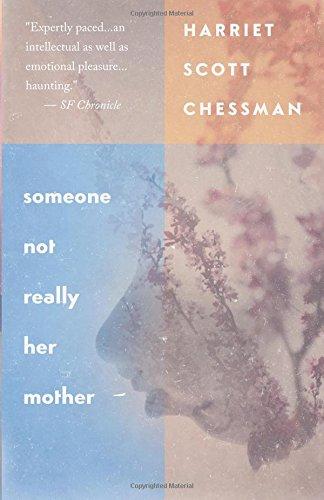
SOMEONE NOT REALLY HER MOTHER
As dementia overtakes Hannah Pearl, she slips backward in memory to her escape from France in 1940; boarding the ferry with her heavy bags; the whistle of bombs raining down on London; the family she left behind. Her daughter Miranda, distraught by Hannah’s fading lucidity and sudden switch to her childhood French, tries desperately to hold her in the present. Fiona, a new mother and the older of Hannah’s two granddaughters, ignores the ghosts of her grandmother’s past, while her sister, fiery Ida, seeks to delve into Hannah’s story, eventually returning to France to find the roots of her grandmother’s life—and her own.
As dementia overtakes Hannah Pearl, she slips backward in memory to her escape from France in 1940; boarding the ferry with her heavy bags; the whistle of bombs raining down on London; the family she left behind. Her daughter Miranda, distraught by Hannah’s fading lucidity and sudden switch to her childhood French, tries desperately to hold her in the present. Fiona, a new mother and the older of Hannah’s two granddaughters, ignores the ghosts of her grandmother’s past, while her sister, fiery Ida, seeks to delve into Hannah’s story, eventually returning to France to find the roots of her grandmother’s life—and her own.
- Plume Books
- Paperback
- 2005
- 176 Pages
- 9780989302357
About Harriet Scott Chessman
Harriet Scott Chessman is the author of Lydia Cassatt Reading the Morning Paper. Formerly associate professor of English at Yale University, Chessman has also taught literature and writing at Bread Loaf School of English and Wesleyan University, and has published several essays on modern literature. She lives in the Bay Area with her family.
Praise
A Good Morning America “Read This” Book Club pick
Discussion Questions
The title Someone Not Really Her Mother implies a number of meanings. How do you interpret it?
How does Hannah Pearl’s loss of memory and inability to find the right words enhance the narrative? How does language play a crucial role in this novel?
We see through Hannah how the trauma experienced by the generation who grew up during the Second World War affected the second and third generations. How has Miranda been affected by her mother’s past? Ida and Fiona have also been affected by their grandmother’s past but in different ways. How do you explain these differences?
On page 109, Hannah says, “Je suis tellement desolee,” and this feeling of being so very sorry, too sorry for words fills this bright air now . . .” Why does Hannah feel so sorry?
Harriet Chessman’s novel is filled with wonderful imagery. For example, on page 3, we are told that Hannah Pearl notices a “young woman with hair the color of honey,” echoing the image of the bee in the quote by Virginia Woolf, given in the beginning of the novel. This image is picked up again on page 15, when Hannah remembers another girl with hair “The color of honey,” and remembers that this girl is Miranda. Why is imagery so important in this novel? Can you find any other significant images?
Do you agree with Miranda when she says, “Could it be that her mother’s deepest sorrow is about something more even than the invasion by the Germans, or the Occupation, or what came after? That it’s about something in addition to the history she had to breatheand move in, day to day, minute to minute — something in addition to her grievous loss? Could it be that, at the core, it’s a question of love? Could it be this ordinary a logic, yet misguided? Emma was kept, proving that Emma was loved. Hannah was sent to England, proving that Hannah was not loved.”
Why is it significant that Hannah Pearl now speaks French after not speaking it for so many years?
The novel ends with Hannah and her grandson, Seamus. Why is this the perfect place to end the novel?
